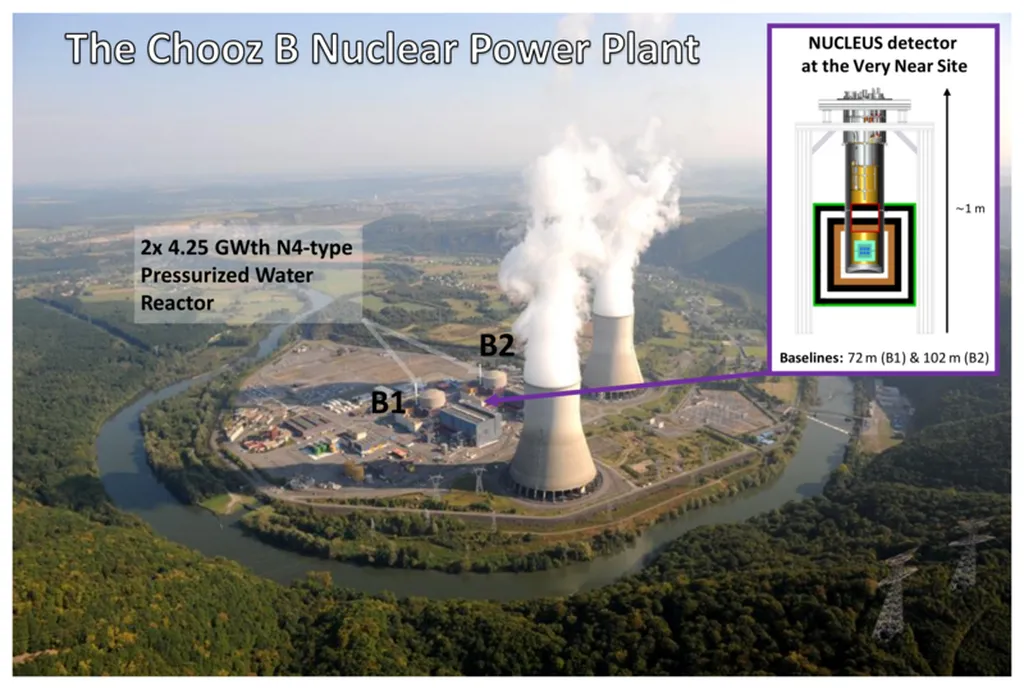Researchers at the NUCLEUS collaboration, based at the Chooz nuclear power plant in France, have been working on a novel experiment to measure Coherent Elastic Neutrino-Nucleus Scattering (CEνNS) and search for new physics. The team, which includes scientists from various institutions, has recently published their findings in a peer-reviewed journal.
The NUCLEUS experiment aims to detect neutrinos emitted by the Chooz nuclear reactor using cryogenic detectors. To ensure the success of this endeavor, the researchers have focused on characterizing and predicting particle-induced backgrounds, particularly in the sub-keV energy range where the CEνNS signal is expected to be most prominent.
To achieve this, the team conducted extensive measurements of environmental background radiations at the experimental site. They also ran detailed Monte Carlo simulations using the Geant4 package to optimize the experimental setup for background reduction and estimate residual background rates. The simulations took into account various sources of background, including cosmic ray-induced radiations, environmental gammas, and material radioactivity.
The results of these simulations predict that the NUCLEUS experimental setup will achieve a total rejection power of more than two orders of magnitude. This means that the setup will be highly effective in filtering out unwanted background noise. The residual background component is expected to be strongly dominated by cosmic ray-induced neutrons. In the CEνNS signal region of interest between 10 and 100 eV, a total particle background rate of approximately 250 d⁻¹kg⁻¹keV⁻¹ is anticipated in the CaWO₄ target detectors. This corresponds to a signal-to-background ratio of greater than 1, meeting the required specifications for the detection of reactor antineutrinos through CEνNS.
The practical applications of this research for the energy sector are significant. By improving the detection of neutrinos from nuclear reactors, the NUCLEUS experiment could enhance our understanding of reactor operations and contribute to the development of advanced reactor technologies. Additionally, the techniques and methodologies developed for background characterization and reduction in this experiment could be applied to other areas of nuclear and particle physics research.
This research was published in the journal [Physical Review D](https://journals.aps.org/prd/), a peer-reviewed publication that focuses on particles, fields, gravitation, and cosmology.
This article is based on research available at arXiv.

